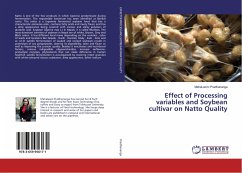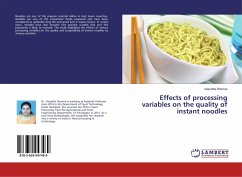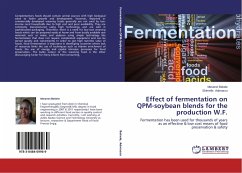Natto is one of the few products in which bacteria predominate during fermentation. The responsible bacterium has been identified as Bacillus natto. The natto is a Japanese fermented soybean food that has a characteristic ammonia odor, contains fatty acids and musty flavor and has a slimy appearance being covered with viscous and sticky polymers of glutamic acid. Soybean (Glycine max L.) in Nepali, it is called Bhatmas. The most dominant varieties of soybean in Nepal are of white, Brown, Grey and Black colors. It has different local name depending on the varieties , color of seeds and locations like Nepale , Hardi , Darmali, Maily , Kalo , Seto and so on B. subtilis fermentation of soaked and cooked soybeans results in proteolysis of soy polypeptides, altering its digestibility, taste and flavor as well as improving the protein quality. Besides it inactivates anti-nutritional factors, remove indigestible oligosaccharides, increase isoflavone, proteolytic enzymes, phytosterols that can make difference in human health.B. subtilis fermentation is accompanied by covering intact granules with white-coloured viscous substance, slimy appearance, softer texture.
Hinweis: Dieser Artikel kann nur an eine deutsche Lieferadresse ausgeliefert werden.
Hinweis: Dieser Artikel kann nur an eine deutsche Lieferadresse ausgeliefert werden.








